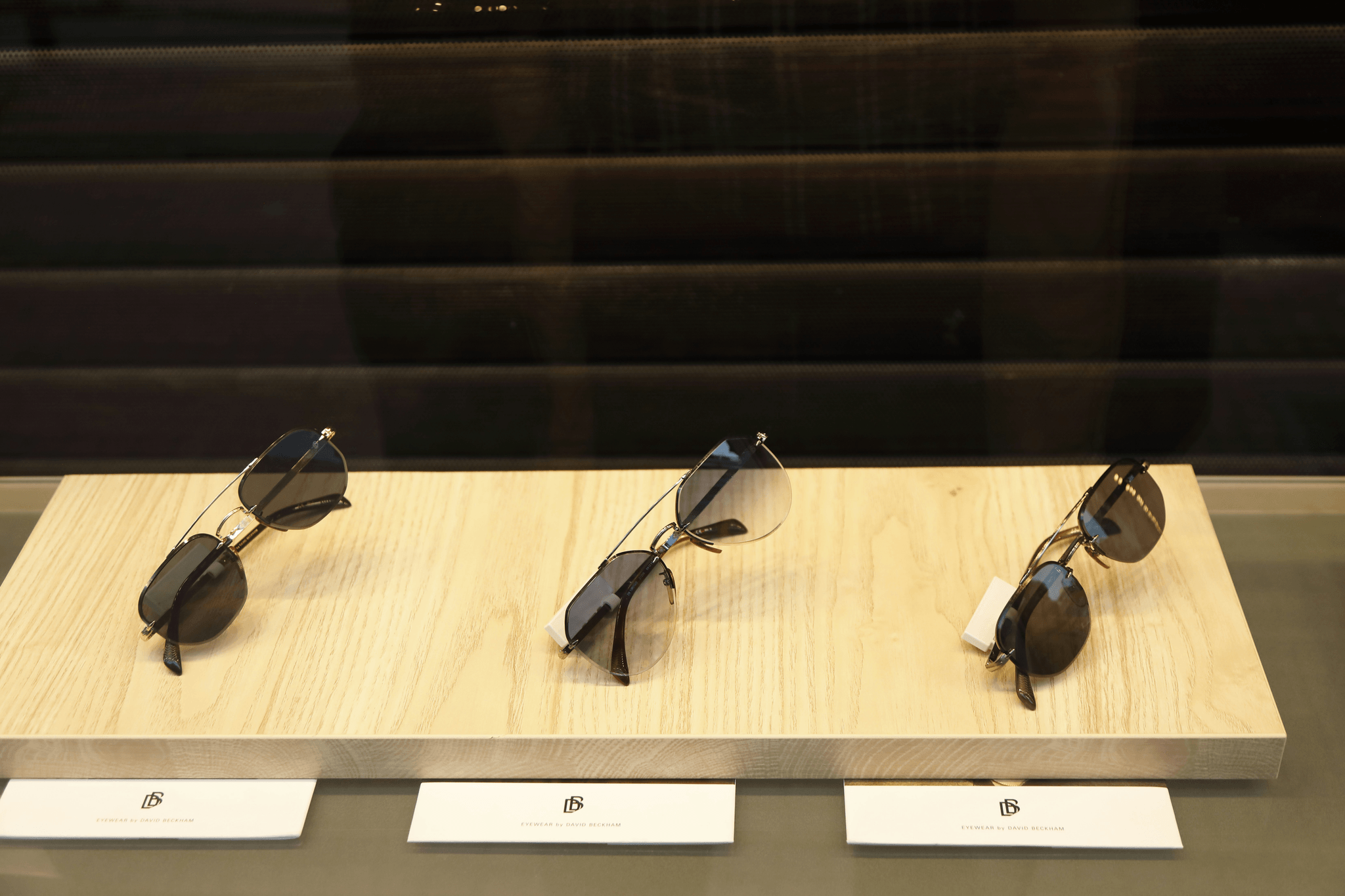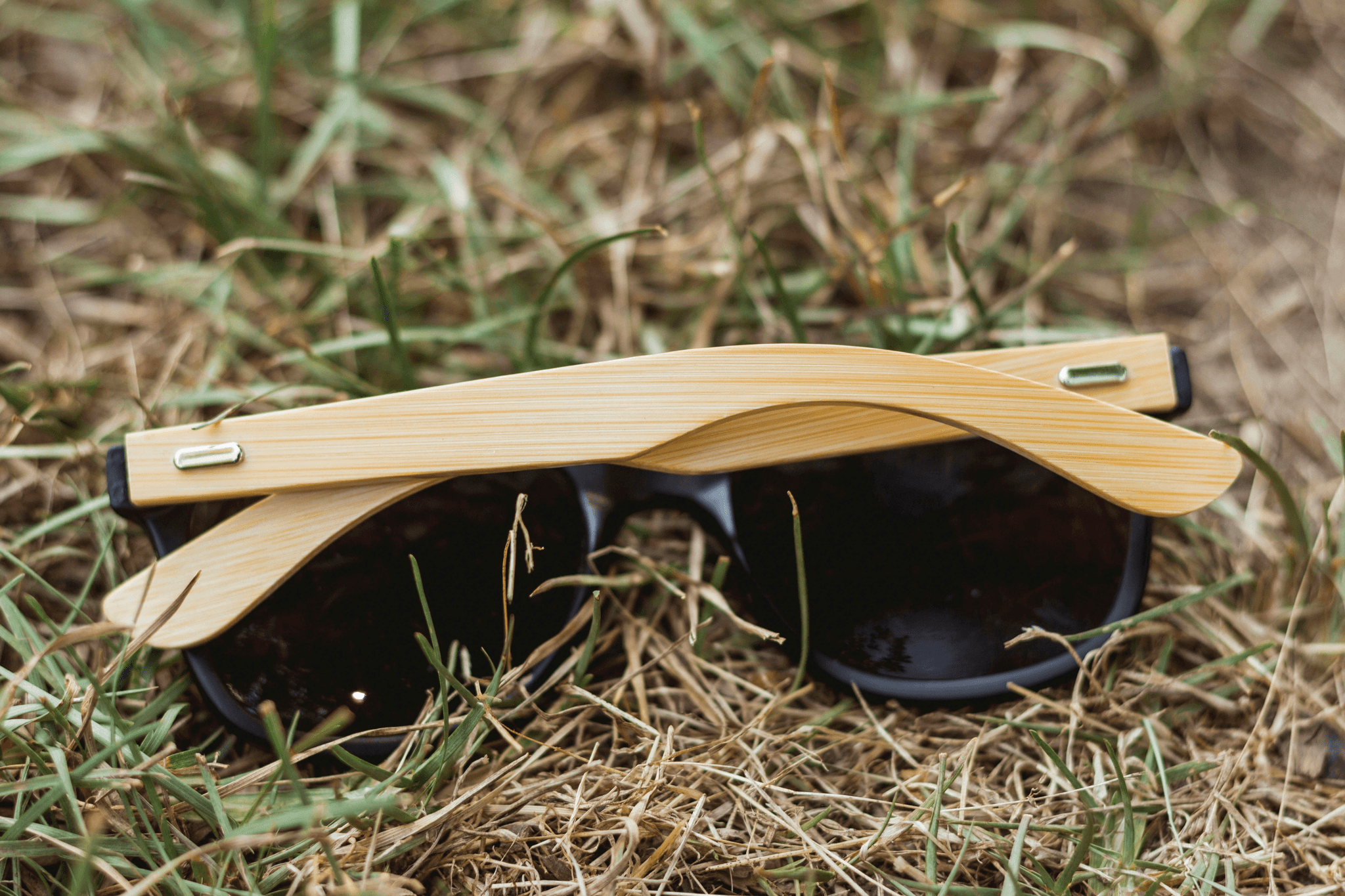Introduction

When it comes to sunglasses, have you ever wondered what they are made of? The materials used to make sunglasses have evolved over time, from traditional glass to modern plastic and sustainable alternatives. Understanding the composition of sunglasses is essential in making informed choices about UV protection and environmental impact. Daposi is committed to providing eco-friendly eyewear options that prioritize sustainability without compromising style or performance.
Exploring Sunglasses Materials
Sunglasses are typically made from a variety of materials, including glass, plastic, and innovative sustainable alternatives such as bamboo and recycled plastic. The choice of material can significantly impact the durability, comfort, and environmental footprint of the eyewear.
Importance of Sustainable Sunglasses
In today's world, sustainability is a key consideration for consumers looking for environmentally friendly products. Sustainable sunglasses not only reduce the use of non-renewable resources but also contribute to minimizing waste and carbon emissions in their production.
Daposi's Commitment to Eco-friendly Eyewear
Daposi recognizes the importance of sustainability in eyewear manufacturing and has made a commitment to offering eco-friendly sunglasses that incorporate innovative materials while ensuring 100% UV protection for your eyes.
The History of Sunglasses Materials

Sunglasses have come a long way from their humble beginnings, with the earliest known use of glass lenses dating back to 12th century China. These early sunglasses were made from smoky quartz, which offered some protection against the sun's glare. However, they were heavy and impractical for everyday use.
Early Use of Glass in Sunglasses
As sunglasses gained popularity in the 20th century, manufacturers began using glass lenses due to their clarity and scratch resistance. However, glass lenses are heavy and can shatter upon impact, posing safety risks for wearers. Despite these drawbacks, glass remained a popular choice for decades due to its optical quality.
Transition to Plastic Materials
In the 1950s, sunglasses materials underwent a significant shift with the introduction of plastic lenses. These lightweight and impact-resistant lenses revolutionized eyewear, making sunglasses more comfortable and safer to wear. Plastic also allowed for greater design flexibility, leading to the iconic styles we know today.
Sustainable Alternatives in Modern Eyewear
With growing environmental concerns, modern eyewear has embraced sustainable alternatives such as bio-based plastics and recycled materials. These eco-friendly options reduce reliance on non-renewable resources while offering comparable durability and UV protection. As consumers become more conscious of their environmental footprint, sustainable materials are becoming increasingly popular in the eyewear industry.
Are sunglasses made of glass or plastic? The transition from glass to plastic marked a significant milestone in the evolution of sunglasses materials. While glass was once the primary choice for its optical properties, plastic has since become the preferred material due to its lightweight nature and impact resistance.
Common Materials Used in Sunglasses

When it comes to what sunglasses are made of, there are a few common materials used in their construction. Polycarbonate is a popular choice due to its impact resistance and lightweight nature, making it ideal for sports and outdoor activities. CR-39 plastic, on the other hand, offers excellent optical clarity and is often used in prescription sunglasses. Glass lenses, while less common nowadays, still provide superior optical quality but are heavier and more prone to breakage.
Polycarbonate
Polycarbonate is a durable thermoplastic material that is commonly used in sunglasses manufacturing. Its high impact resistance makes it an ideal choice for sports and outdoor activities, as it provides protection against potential damage or breakage. This lightweight material also offers excellent optical clarity, making it a popular choice for those seeking both durability and visual acuity in their eyewear.
CR-39 Plastic
CR-39 plastic, also known as allyl diglycol carbonate (ADC), is a lightweight material that offers superior optical quality. It is often used in the production of prescription lenses due to its ability to provide clear vision without the weight of glass lenses. CR-39 plastic is also resistant to shattering, making it a safe and practical choice for everyday eyewear.
Glass Lenses
While less common than polycarbonate and CR-39 plastic, glass lenses still offer unparalleled optical clarity. However, they are heavier and more prone to breakage than their plastic counterparts. Glass lenses may not be as impact-resistant as polycarbonate or CR-39 plastic but they remain an option for those seeking the highest level of visual acuity in their sunglasses.
Innovative Sustainable Materials

When it comes to sustainable materials for sunglasses, bamboo frames are becoming increasingly popular due to their eco-friendly and renewable nature. Bamboo is a fast-growing plant that requires minimal resources to thrive, making it an ideal material for environmentally conscious eyewear. Not only are bamboo frames stylish and lightweight, but they also offer a unique and natural aesthetic that sets them apart from traditional materials.
Bamboo Frames
Bamboo frames are not only stylish and lightweight, but they are also durable and resistant to wear and tear. This makes them an excellent choice for individuals looking for sustainable yet long-lasting eyewear options. With their natural grain patterns and earthy tones, bamboo frames add a touch of organic elegance to any outfit while reducing the environmental impact of traditional plastic or metal frames.
Recycled Plastic
Innovative sustainable materials for sunglasses also include recycled plastic, which helps reduce waste by repurposing discarded materials into new eyewear products. By using recycled plastic in the production of sunglasses, manufacturers can minimize the demand for new plastic production while creating stylish and durable frames that contribute to a circular economy. This approach not only benefits the environment but also promotes responsible consumption and waste reduction.
Eco-Friendly Acetate
Eco-friendly acetate is another innovative material used in sustainable sunglasses, offering a more environmentally conscious alternative to traditional petroleum-based plastics. Derived from renewable resources such as wood pulp or cotton fibers, eco-friendly acetate provides a biodegradable option for fashion-forward individuals seeking stylish yet eco-conscious eyewear options. With its versatility and sustainability credentials, eco-friendly acetate is helping redefine the future of eyewear manufacturing.
By incorporating innovative sustainable materials such as bamboo frames, recycled plastic, and eco-friendly acetate into their designs, Daposi is leading the way in providing environmentally conscious eyewear options without compromising on style or quality. Embracing these innovative materials not only reduces the environmental impact of sunglass production but also encourages consumers to make informed choices that contribute to a more sustainable future for fashion accessories.
Impact of Materials on UV Protection

When it comes to UV protection, ensuring 100% defense against harmful rays is crucial. The lens material plays a significant role in this, as it determines the level of UV safety provided by the sunglasses. Different materials have varying abilities to block UV rays, so it's essential to choose a material that offers maximum protection.
Ensuring 100% UV Protection
Sunglasses are made to shield our eyes from harmful UV rays, so it's important to ensure they provide 100% UV protection. This means that the lenses block both UVA and UVB rays, safeguarding our eyes from potential damage caused by prolonged exposure to the sun. Always look for sunglasses with a label indicating 100% UV protection to guarantee your eyes are well-protected.
The Role of Lens Material in UV Safety
The type of material used for the lenses significantly impacts the sunglasses' ability to provide adequate UV safety. Some materials naturally offer better UV protection than others, so it's essential to consider this factor when choosing sunglasses. Polycarbonate and CR-39 plastic are known for their excellent ability to block UV rays, making them popular choices for lens materials.
Daposi's UV Filter Technology
At Daposi, we understand the importance of superior UV protection in eyewear. That's why we've developed advanced UV filter technology that ensures our sunglasses provide optimal defense against harmful rays. Our commitment to using high-quality materials with exceptional UV-blocking capabilities guarantees that you can enjoy clear vision while keeping your eyes safe from the sun's damaging effects.
Choosing the Right Sunglasses Material

When it comes to choosing the right material for your sunglasses, there are several factors to consider. The first is durability - you want a material that can withstand daily wear and tear. Next, think about comfort - the material should be lightweight and comfortable for extended use. Finally, consider the environmental impact - opt for sustainable materials that minimize harm to the planet.
Factors to Consider
When selecting sunglasses, it's important to consider factors such as durability, comfort, and environmental impact. You want a material that can withstand daily use without easily scratching or breaking. Additionally, lightweight and comfortable materials ensure you can wear your sunglasses for extended periods without discomfort. Finally, choosing sustainable materials helps reduce your environmental footprint and supports eco-friendly practices.
Balancing Style and Sustainability
Balancing style with sustainability is crucial when choosing sunglasses materials. You want a pair of shades that not only look great but also align with your values in terms of eco-friendliness. Fortunately, many brands offer stylish options made from innovative sustainable materials like bamboo frames or recycled plastic, proving that you don't have to compromise on style for sustainability.
Daposi's Range of Eco-friendly Sunglasses
At Daposi, we understand the importance of offering eco-friendly eyewear options without sacrificing style or quality. Our range of sunglasses features frames made from sustainable materials such as bamboo and eco-friendly acetate, ensuring you can make a fashion statement while supporting environmentally conscious practices.
Conclusion

Making Informed Material Choices for Eyewear
When it comes to what sunglasses are made of, there are various options to consider, from traditional glass to modern plastic and sustainable materials. It's important to understand the impact of these materials on the environment and UV protection when choosing the right pair of sunglasses.
Daposi's Sustainable Vision for the Future
As a leading eyewear brand, Daposi is committed to sustainability and eco-friendly practices. Our vision for the future includes a focus on innovative materials that minimize environmental impact without compromising style or quality. We believe that sustainable eyewear is not just a trend, but a necessity for a better planet.
Embracing Eco-friendly Sunglasses Options
With increased awareness of environmental issues, more consumers are seeking eco-friendly alternatives in their everyday purchases, including sunglasses. By embracing sustainable options such as bamboo frames and recycled plastic, individuals can make a positive impact while still enjoying stylish eyewear that provides 100% UV protection.
Remember, the material used to make sunglasses plays a significant role in their overall sustainability and UV protection. By making informed choices and supporting brands like Daposi that prioritize eco-friendly practices, we can collectively contribute to a greener future while looking effortlessly cool in our shades.
